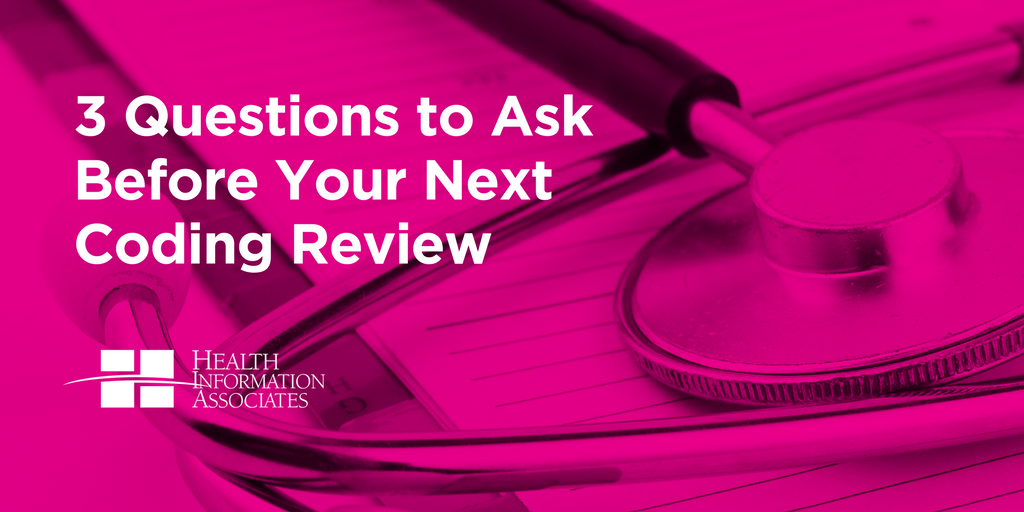But that’s no reason to descend into a shame spiral. Just because you’ve lost momentum doesn’t mean it’s too late to refocus and begin again. Enlist the help of an experienced coach to train, educate, and hold you accountable to ensure your success.
The same theory applies to coding reviews. You know they are necessary to improve the quality of your Coding Department. Perhaps you’ve intended to do another audit but get hung up on finding the time, the manpower, or how to get started. Jillian Poe Howitt, RHIT, CDIP, CCS, Review Services Manager at Health Information Associates sheds some light on how to prepare for a successful coding review.
So, you know you need a coding review – where do you start? Defining your goal should always be step one, but that’s not always cut and dry. The answer varies based on the objectives of your review.
We ask our client partners the following questions to help guide them on establishing their objectives:
- When was your last review?
- Are you seeing a drop in case mix, quality scores, or have you experienced an unexplained change in denials?
- Have you recently hired new coders?
It’s been awhile since my last review
Haven’t had a review in six months, two years or longer? Hey, it happens.
If this is the case, we recommend starting with a Baseline Audit with a random sample. This provides a snapshot of where you coders stand. It also allows you to see strengths and where opportunities lie in order to focus on education and future reviews.
Blindly jumping into a focused audit at this point could
a) provide great results, but make you question if that was the best use of limited funds, or more likely
b) provide results that make you fall out of your chair because the sample was ‘loaded.’
I’ve had my Baseline Review, now what?
Based on the results of the initial review, a thorough analysis of areas that fell below your expectations should be performed.
For instance, did specific DRG’s, Diagnosis, Procedures, MDC’s reveal a trend? Were there too many/too few queries, individual coders with less than stellar results?
For our client partners, we provide an Executive Summary. This report highlights areas of priority with action plans and modules and a series of follow up focused reviews to ensure the education has not only been planted, but that it’s taking roots.
It’s always ‘Coding’s Fault’
Is someone breathing down your neck because those Quality Measures aren’t where they need to be? Time for a Focused Review.
For our client partners, we identify a sample for an in-depth review to reveal the possible reasons behind the changes. There are other factors – in addition to coding – like 30 day Re-Admits, POO and excluded code lists that can affect quality measures. Of course, we’ll validate that these are being assigned correctly as well.
Is my New Hire up to speed?
Prebill reviews can save a lot of headaches if you don’t have the resources internally to audit a new coder. These provide the coder with immediate feedback and one on one education tailored to their individual needs and learning style.
Typically, this service is performed by dedicating one of our Interim Auditors to you for a specified period of time.
Resources
HIA’s comprehensive coding review service evaluates coding compliance and assists in identifying educational opportunities for coders, CDI specialists and providers. Our Comprehensive approach will also make certain that our clients are receiving appropriate reimbursement for each service rendered. Learn More »






Leave a Comment